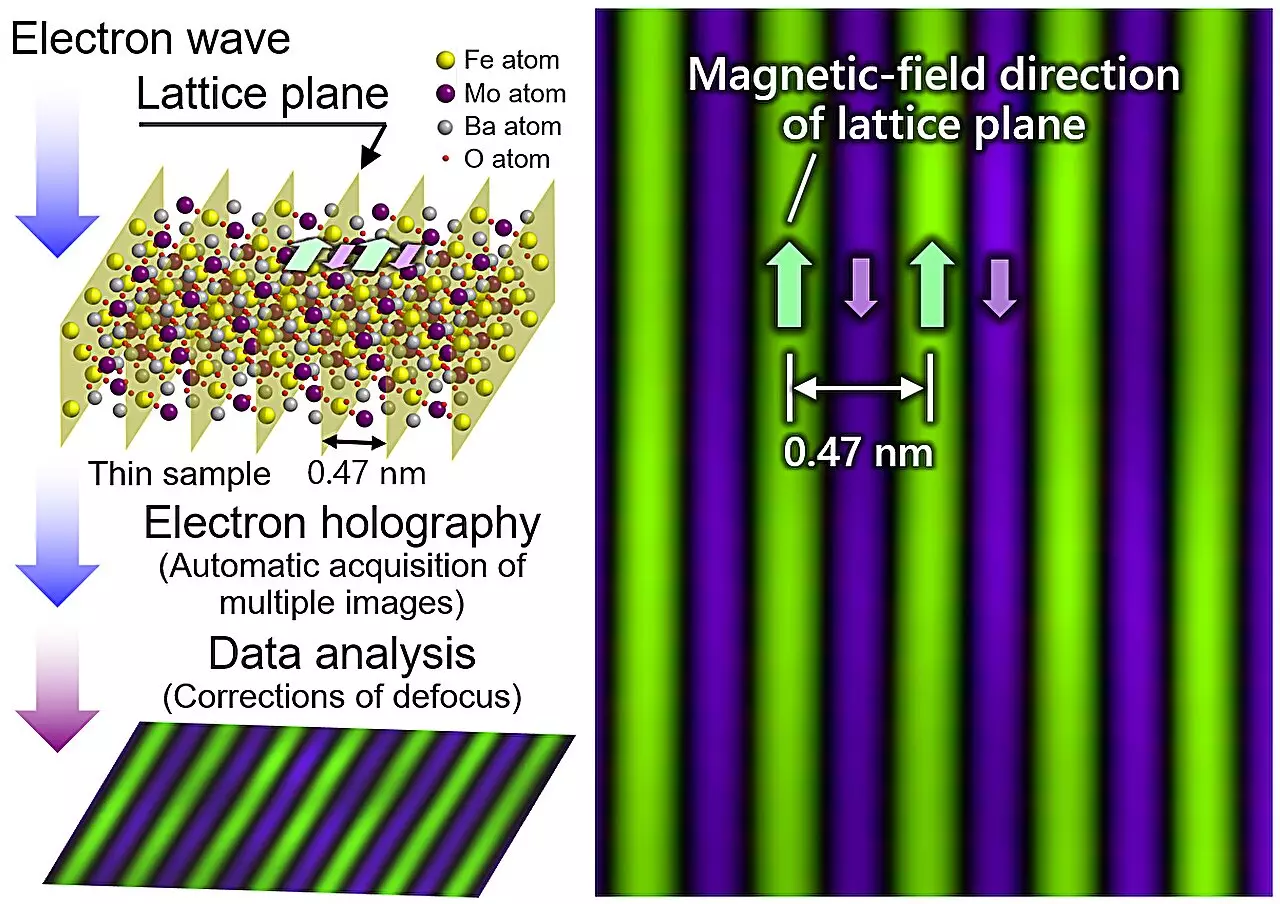The ability to observe magnetic fields at incredibly small scales is crucial for the development of high-performance materials with tailored characteristics. A recent breakthrough by a research team from Japan has pushed the limits of magnetic field observation to unprecedented resolutions. This achievement has far-reaching implications in various fields, from fundamental physics to next-generation devices.
Collaborating with institutions like Hitachi, Kyushu University, RIKEN, and HREM Research Inc., the research team used Hitachi’s atomic-resolution holography electron microscope to visualize the magnetic fields of individual atomic layers within a crystalline solid. Prior to this breakthrough, the maximum resolution for observing magnetic fields of atomic layers was limited to around 0.67 nm. However, the team managed to surpass this record by developing a system to automate the control and tuning of the device, significantly speeding up the imaging process.
By performing specific averaging operations with the images captured, the researchers were able to minimize noise and obtain clearer images containing distinct electric field and magnetic field data. Additionally, they addressed the challenge of minute defocusing by implementing a correction method that analyzed reconstructed electron waves. This correction technique ensured that the resulting images were free of residual aberrations, allowing for the easy discernment of atom positions and phases with magnetic field data.
The team conducted electron holography measurements on samples of Ba2FeMoO6, a layered crystalline material with distinct magnetic fields in adjacent atomic layers. By comparing their experimental results with simulations, they confirmed that they had achieved an unprecedented resolution of 0.47 nm in observing the magnetic fields of Ba2FeMoO6. This breakthrough opens doors to direct observations of magnetic lattices in specific areas, such as interfaces and grain boundaries, in various materials and devices.
Implications and Potential
The research team believes that their achievement will help address numerous scientific and technological challenges. The atomic-resolution holography electron microscope developed for this research is expected to be utilized by various parties, contributing to advancements in fields ranging from fundamental physics to the development of next-generation devices. Ultimately, this innovation could play a crucial role in realizing a carbon-neutral society through the development of high-performance magnets and highly functional materials essential for decarbonization and energy-saving efforts.
The breakthrough in magnetic field observation at atomic scales represents a significant milestone in scientific research and technological development. The implications of this achievement are vast, promising advancements in various fields and contributing to the transition towards a sustainable future. The potential for further exploration and innovation in this area is immense, laying the foundation for groundbreaking discoveries and applications in the years to come.


Leave a Reply